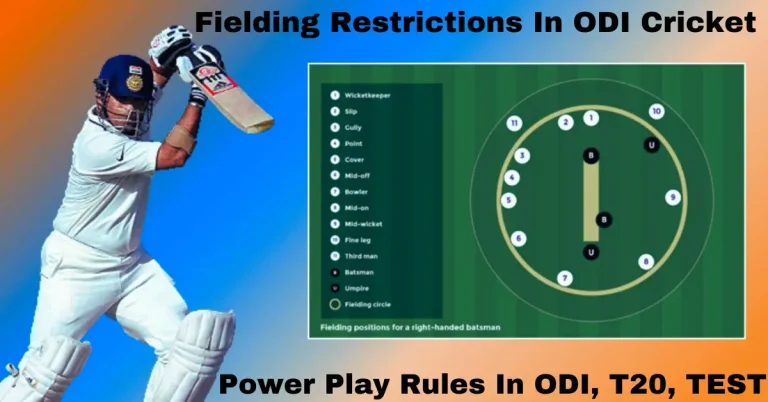Types Of Bowling in Cricket: Fast, Spin, Medium, Swing and Yorker
Cricket is a sport known for its captivating bowling techniques. In this article, we’ll provide a brief and clear insight into the primary types of bowling in cricket.
Types of Bowling in Cricket
1. Fast Bowling

– Description: Fast bowlers aim for high speed, often exceeding 90 miles per hour. They intimidate batsmen with pace and bounce.
– Notable Practitioners: Dale Steyn, Shoaib Akhtar, Mitchell Starc.
– Tactics: Focus on swinging the ball, aiming for the stumps, and using short-pitched deliveries (bouncers).
2. Spin Bowling

– Description: Spin bowlers use spin to deceive batsmen, making the ball turn. This requires precision and skill.
– Notable Practitioners: Shane Warne, Anil Kumble, Ravichandran Ashwin.
– Tactics: Leg spin, off-spin, and variations like the doosra and googly.
3. Medium-Pace Bowling

– Description: Medium-pacers balance between fast and spin bowlers. They rely on variations in pace and swing. See Also: What is Strike Rate in Cricket
– Notable Practitioners: Jacques Kallis, Richard Hadlee, Stuart Broad.
– Tactics: Focus on seam movement, consistent line and length, and pace variations.
4. Swing Bowling

– Description: Swing bowlers make the ball curve in the air. This disrupts the batsman’s judgment. See Also: Best ODI Bowling Figures
– Notable Practitioners: Wasim Akram, James Anderson, Bhuvneshwar Kumar.
– Tactics: Employ reverse swing, conventional swing, and inswing/outswing.
5. Yorker Bowling

– Description: Yorkers are full-length deliveries aimed at the batsman’s toes, making powerful shots difficult. See Also: Best T20 Bowling Figures
– Notable Practitioners: Lasith Malinga, Waqar Younis, Jasprit Bumrah.
– Tactics: Bowl with accuracy and late swing for surprise.
Types of Spin bowling in cricket
In cricket, spin bowlers employ various techniques to outwit the batsmen. There are two primary types of spin bowling:
1. Off-Spin: Off-spinners primarily spin the ball away from the batsman (for right-handed batsmen) and into the batsman (for left-handed batsmen). They use their fingers to impart spin, and variations like the “doosra” can surprise the batsman by spinning the other way.
2. Leg-Spin:Leg-spinners spin the ball in the opposite direction, causing it to turn towards the batsman (for right-handed batsmen). They use their wrists to generate spin and often have a wide array of deliveries, including googlies and top-spinners, to deceive the batsman.
Types of Fast bowling in cricket
In cricket, fast bowlers use different techniques to keep batsmen on their toes. Some common types of fast bowling include swing bowling, where the ball curves in the air, and seam bowling, where the bowler uses the ball’s seam to make it move unpredictably on the pitch. There’s also pace bowling, where bowlers focus on sheer speed to make it challenging for batsmen. These different styles of fast bowling add excitement and unpredictability to the game, making it more engaging for fans.
FAQ’s
The effectiveness depends on conditions and the bowler’s skill; there’s no one-size-fits-all answer.
Enhance your skills through practice, fitness, and coaching.
Consistency, exploiting weaknesses, and varying tactics are key.
Leg spin spins from leg to off, while off-spin goes from off to leg, with different wrist positions and release points.
Conclusion
Cricket’s diverse bowling techniques add excitement and depth to the sport. This article has provided a concise overview of the key types of bowling in cricket. Whether you’re an aspiring cricketer or a fervent fan, understanding these basics will deepen your appreciation for the game. Now, it’s your turn to practice and master these skills, enriching your cricket experience.







